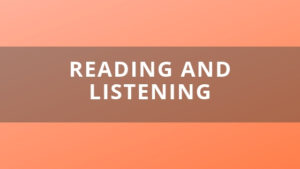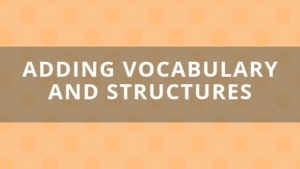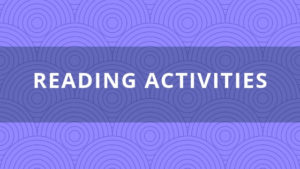
The original inlingua method was based almost exclusively on speaking in class. Learners were encouraged to practice the skills of reading, listening and writing in their own time. This is not to say that listening, reading and, to some extent, writing were not included in the classroom activities, but their main function was to provide a stimulus for speaking.
 New Course Books and TRPs
New Course Books and TRPs
In the newer versions of the inlingua Course Books and Trainer Resource Packs (TRP), it was decided that we should cover the Common European Framework’s (CEF) ‘can do’ statements. A new set of corresponding levels for our books was developed to coincide with the Common European Framework. This rearrangement meant that skills other than speaking needed to be included in a more active way.

Reading and Listening
In most commercial language learning books, reading and listening are included in such a way that the trainer simply needs to follow the order of exercises presented in the Course Book. inlingua Course Books present reading activities in the first part of a unit, followed by the listening tasks. This may seem confusing to new trainers, but it is essential that the TRP is used as a basis of the lesson plan. The lesson plan gives the order in which the reading and listening activities are to be done. This is presented in such a way that most of the vocabulary and structures have already been introduced through speaking.

Adding Vocabulary and Structures
Some language items are reserved for introduction through reading or listening to enable the learner to practice the essential skills of reading and listening for comprehension in context. These new items are further practiced and “comprehension checked” by speaking. Usually, this takes the form of a semi-controlled discussion leading to a production exercise to consolidate all the new items learned in a section of the unit. Further production is achieved in the Talking Point section at the end of each unit. This enables all the structures and items learned in a given unit to be used in the spoken form together.

Microskills
In order to fulfil the requirements of the CEF ‘can do’ statements for different levels, the three essential micro skills of reading or listening for general understanding, specific information and detail are practiced. For more on microskills click here.

Reading Activities
The essential point to understand about reading activities is they are almost always done in silence. Trainers will instinctively ask a learner to read, thinking that this is good practice for the learner. The problem is, this turns the exercise into a listening task for the other learners in a class. They are forced to listen and read at the same time, and this is a skill we never really use in real life. It is best to have the learners read individually. It is also important that the learner has a reason to read. To this effect, it is essential to create interest in the topic of the text. A simple general question like “Does the writer approve of…?” or “Does the writer think it is possible for the company to…?” will suffice to give the learner a reason for reading for general understanding. Reading for specific information can often be done using the exercise given in the Course Book, but the trainer may wish to add to the reading by asking the learner specific questions like “What was the maximum price that was paid for…?” or “In which year did the family start going to Spain on holiday?”
Reading for detail may be for several reasons: looking at grammatical structure, looking for synonyms or collocations etc. Reading aloud may be done as pronunciation monitoring, but then it is not really a reading exercise – rather a speaking one.

Listening
The same rules apply to listening, though detail may also be something like “Did you think the speaker was angry?” and “What made you think this?”

Writing
What about writing then? A supplementary book for writing skills was developed in English from book two onward. This can be used in tandem with the Course Book or used for a separate writing lesson at the end of five units.

Conclusion
Integrating reading and listening has enriched the inlingua method without compromising the principles. We can now offer skills-integrated courses, with a learning curve that corresponds to internationally accepted language learning parameters.
Next Blog: inlingua Plus: blended learning